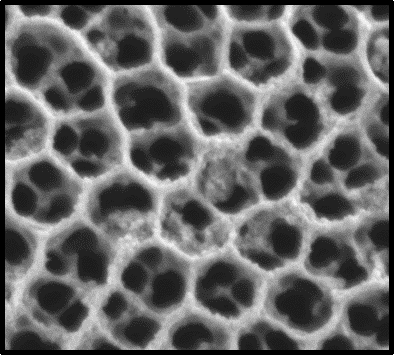Jan 22 2021
A team of researchers from the Institut national de la recherche scientifique (INRS) has collaborated with French researchers from the Institute of Chemistry and Processes for Energy, Environment and Health (ICPEES), a joint research lab of CNRS and University of Strasbourg, to open the door to the synthesis of green hydrogen.
 Nanotubes. Image Credit: INRS.
Nanotubes. Image Credit: INRS.
Led by Professor My Ali El Khakani from INRS, the international team has created new sunlight-photosensitive-nanostructured electrodes. The study findings were reported in the Solar Energy Materials and Solar Cells journal.
An Energy Transition Vector
Many countries associated with the Organisation for Economic Co-operation and Development (OECD) are now considering hydrogen as a key player in the shift toward decarbonized industries and sectors. According to Professor My Ali El Khakani, who is also a physicist and nanomaterials specialist, Quebec has the potential to strategically position itself in this futuristic energy sector.
Thanks to high-performance nanomaterials, we can improve the efficiency of water dissociation to produce hydrogen. This ‘clean’ fuel is becoming increasingly important for the decarbonisation of the heavy-duty trucking and public transportation. For example, buses using hydrogen as a fuel are already in operation in several European countries and in China. These buses emit water instead of greenhouse gases.
My Ali El Khakani, Professor, Institut national de la recherche scientifique
Electrolysis is the method used conventionally to split water molecules into hydrogen and oxygen. But industrial electrolyzers consume excessive energy and need huge investments. Researchers from the INRS and ICPEES were instead attracted to a natural mechanism—photosynthesis. They have actually created exclusively designed and structured electrodes that split water molecules using the sun’s light—a process called photocatalysis.
Challenges in the Design and Fabrication
To ensure optimal use of solar energy, the researchers have chosen a highly abundant and chemically stable material—titanium dioxide (TiO2). This material is a semiconductor known to exhibit photosensitivity to UV light, accounting for just 5% of the solar irradiance.
The researchers have applied their expertise in the field to first modify the atomic composition of TiO2 such that its photosensitivity is extended to visible light. They could create electrodes with the ability to absorb nearly 50% of the light emitted by the sun. This was a major gain right from the start!
Then, the team proceeded with the nanostructuration of the electrode to create a network of TiO2 nanotubes (NT-TiO2) resembling a beehive-like structure. This technique increased the electrode’s effective surface area by a factor of 100,000 or more.
Nanostructuring maximizes the ratio between surface and volume of a material. For example, TiO2 nanostructures can offer a surface area of up to 50 m2 per gram. That’s the surface area of a mid-size flat!
My Ali El Khakani, Professor, Institut national de la recherche scientifique
The last step of the electrode elaboration is the “nanodecoration” of the electrodes. This process includes the deposition of catalyst nanoparticles on the hitherto infinite network of TiO2 nanotubes to improve their hydrogen production efficiency.
The researchers achieved this nanodecoration step by using the laser ablation deposition method, a field in which Professor El Khakani has gained exclusive expertise over the past 25+ years.
The task was not just to control the size, anchorage, and dispersion of the catalyst nanoparticles on the TiO2 nanotube matrix, but also to identify substitutes to the expensive platinum and iridium classical catalysts.
Accessible Materials
This study, which was the subject of Thomas Favet’s doctoral thesis (as part of a dual diplomation program between INRS and the University of Strasbourg), found that cobalt (CoO) and nickel (NiO) oxides—two materials available abundantly in Quebec’s underground—are effective co-catalysts to split water molecules.
A comparison between both the materials revealed that CoO nanoparticles (with a size of 20 nm or less) allowed a 10-fold increase in the photocatalytic efficiency of the new nanodecorated electrodes using visible light than bare nanotubes.
Such a significant improvement could be achieved thanks to the optoelectronic properties of the CoO nanoparticles, that enable a better conveyance of photocharges (electrical charges generated by light) with the underlying TiO2 electrode.
Journal Reference:
Favet, T., et al. (2021) Comparative study of the photocatalytic effects of pulsed laser deposited CoO and NiO nanoparticles onto TiO2 nanotubes for the photoelectrochemical water splitting. Solar Energy Materials and Solar Cells. doi.org/10.1016/j.solmat.2020.110703.